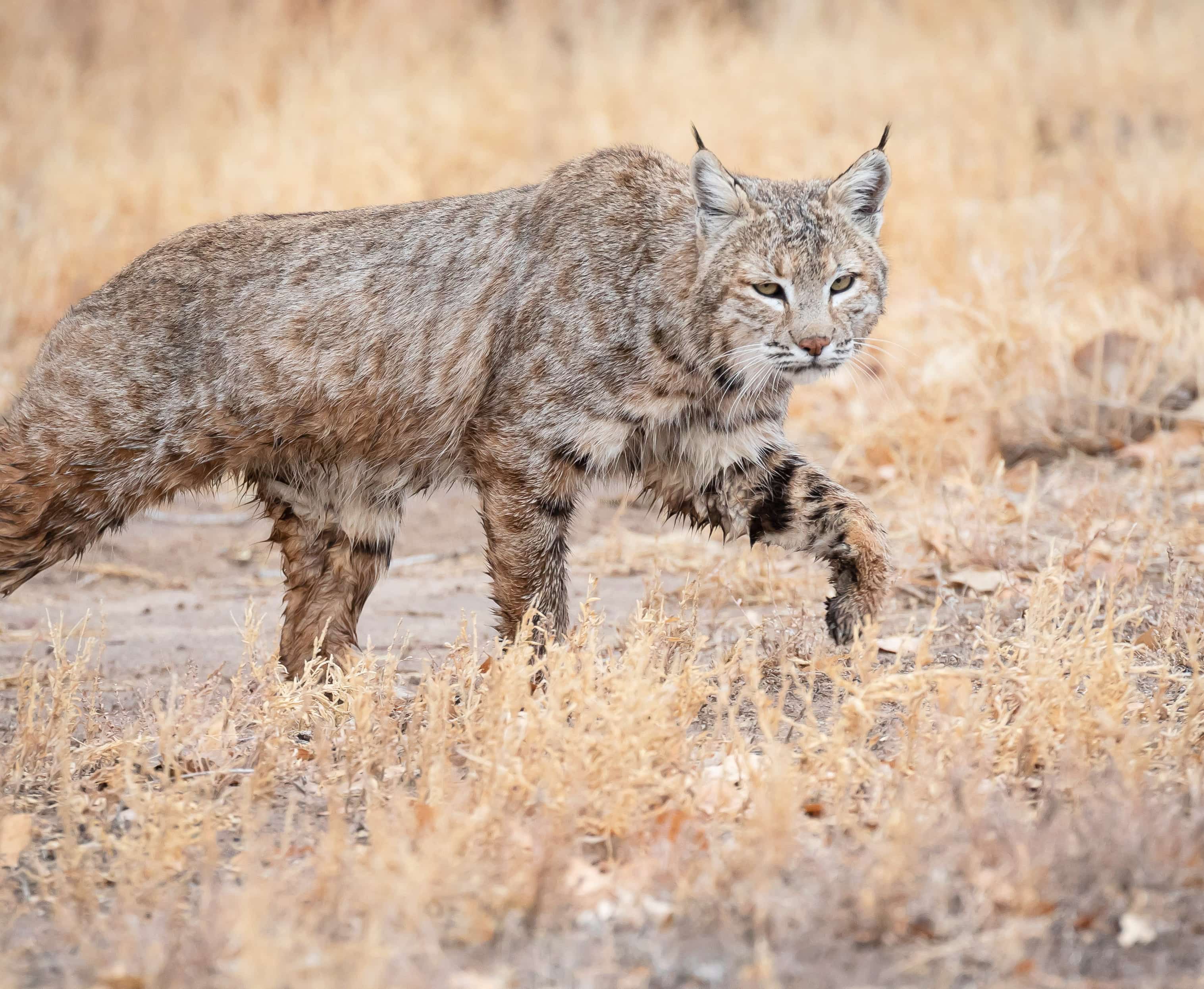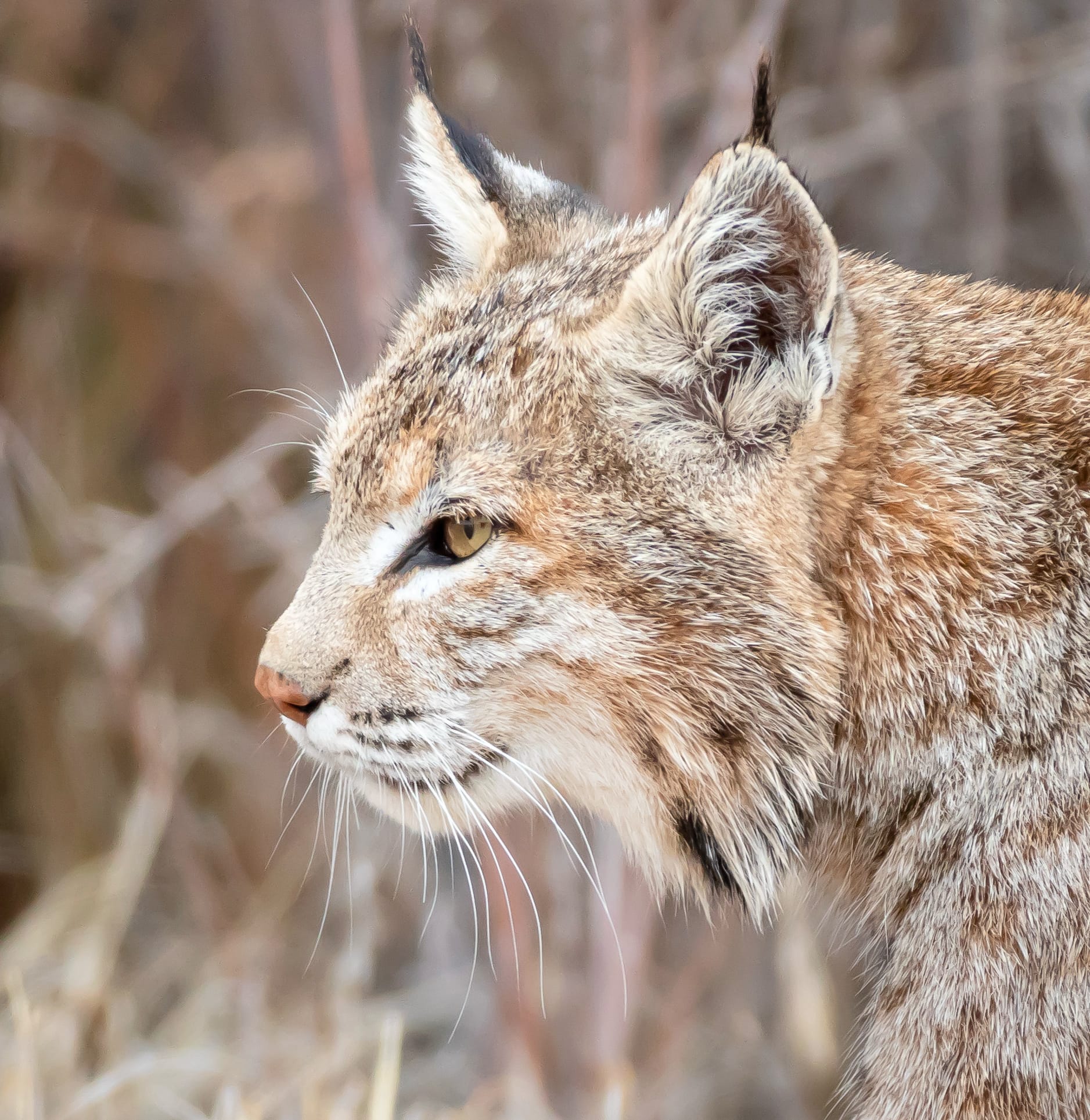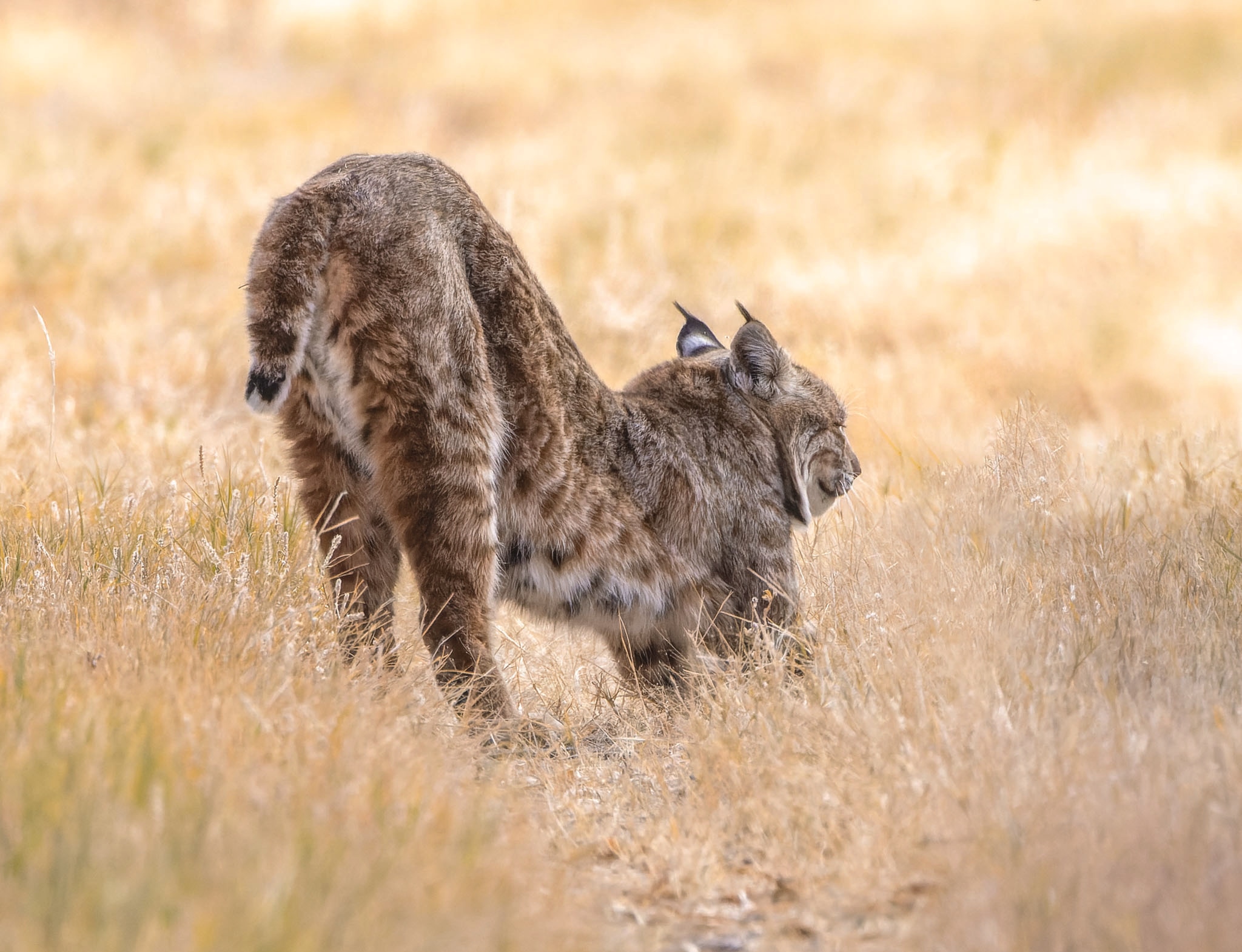Bobcats
While there are several bobcats living at the Bosque del Apache National Wildlife Refuge, they keep to themselves and can be a bit hard to find and photograph. I have managed to get a few photos over the years.

Catchin' Some Rays - Sunrise at the Bosque
Bobcat, Bosque del Apache National Wildlife Refuge, San Antonio NM
January 6, 2015
I’m not sure what this bobcat can see through the brush but off to the right is a pond full of overnighting Sandhill Cranes and Snow Geese watched in anticipation by a full complement of photographers. I’d like to think the cat was entertained by the scene.

Wet Cat
Bobcat, Bosque del Apache National Wildlife Refuge, San Antonio NM
December 10, 2020
I caught this guy coming out of the wet grass one morning after an overnight rain. Smile!!

Bobcat, a Portrait
Bobcat, Bosque del Apache National Wildlife Refuge, San Antonio NM
December 10, 2020
Same cat as above.

Point Taken
Bobcat, Bosque del Apache National Wildlife Refuge, San Antonio NM
November 23, 2021
Addenda
Bobcats: North America's Elusive Wildcats
Bobcats (Lynx rufus) are medium-sized wildcats native to North America. These adaptable and resilient predators are named for their distinctive "bobbed" tail, which is short and appears cut or bobbed.
Physical Characteristics
- - Size: About twice the size of a domestic cat, weighing 15-35 pounds
- - Height: Typically stand 12-24 inches at the shoulder
- - Distinctive features: Short "bobbed" tail (4-7 inches long), tufted ears, and ruffs of fur on the sides of the face
- - Coloration: Varies from yellowish-brown to reddish-brown with dark spots or streaks and a white underside
- - Powerful build with longer hind legs that give them a tilted appearance when standing
Habitat and Range
Bobcats are incredibly adaptable and can be found across diverse environments throughout the United States, southern Canada, and northern Mexico. They thrive in:
- - Forests and woodlands
- - Swamps and coastal marshes
- - Deserts and scrublands
- - Mountains (up to 9,000 feet elevation)
- - Suburban areas with sufficient cover
Behavior
- - Primarily nocturnal and crepuscular (active at dawn and dusk)
- - Solitary and territorial, marking boundaries with urine, feces, and claw marks
- - Excellent climbers and swimmers
- - Known for their stealth and patience when hunting
- - Can make various vocalizations including growls, hisses, and a distinctive scream during mating season
Diet
As carnivores, bobcats prey on:
- - Rabbits and hares (primary food source)
- - Rodents (mice, voles, squirrels)
- - Birds
- - Occasionally deer (especially fawns)
- - Small livestock when natural prey is scarce
Conservation Status
Bobcats are currently listed as "Least Concern" on the IUCN Red List. Their population is generally stable or increasing in many parts of their range, thanks to their adaptability and effective conservation management. However, they still face challenges from habitat fragmentation, roadkill, and in some areas, hunting and trapping.
Their resilience and ability to thrive even in areas with moderate human development has helped them maintain healthy populations compared to many other wild cat species.
Claude AI: Bobcat
